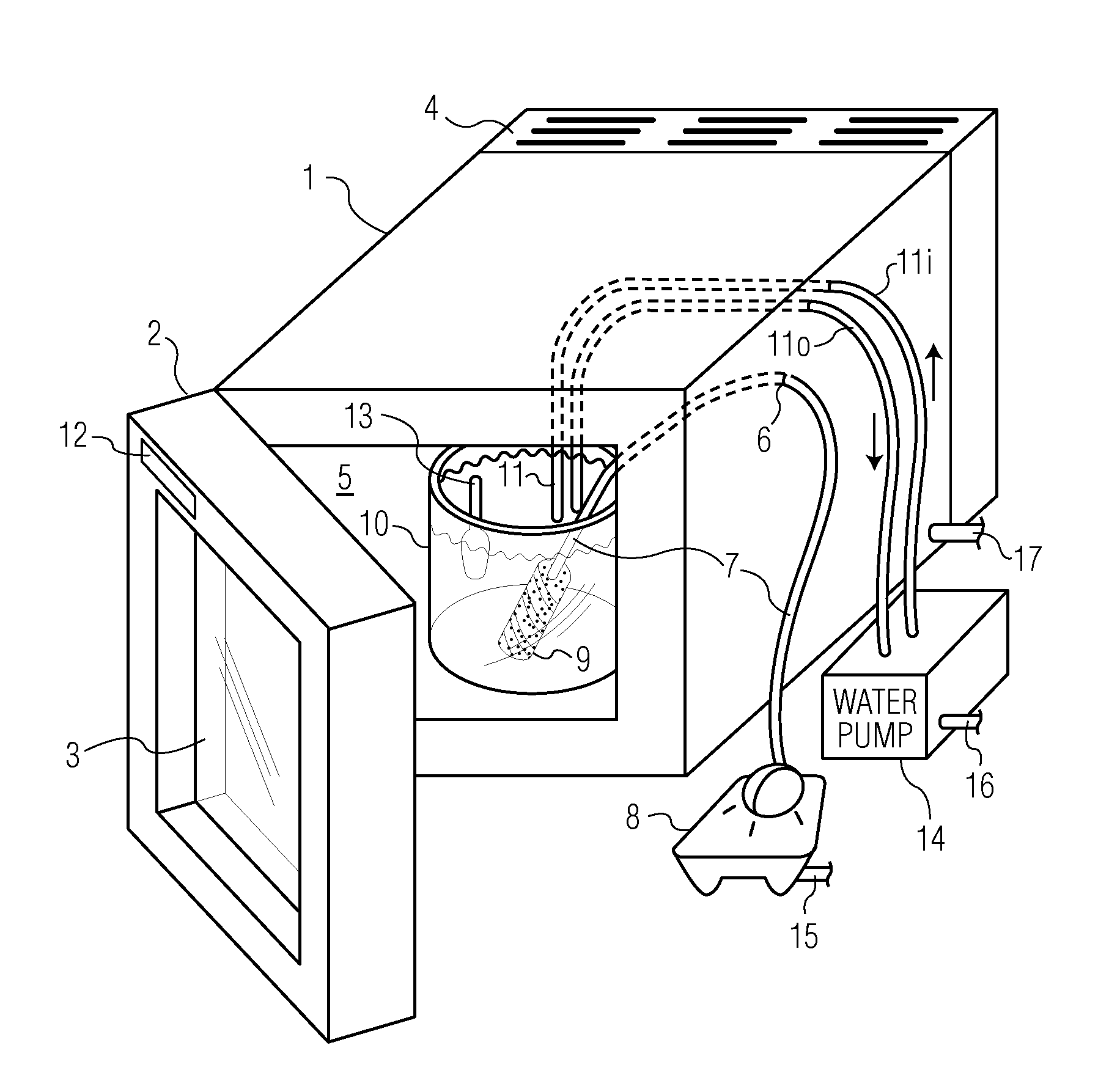Temperature-Controllable Aquaculture Apparatus
a technology of aquaculture and temperature control, applied in pisciculture, aquaria, climate change adaptation, etc., can solve the problems of affecting biodiversity, difficult breathing for organisms, and affecting the effect of temperature ris
- Summary
- Abstract
- Description
- Claims
- Application Information
AI Technical Summary
Benefits of technology
Problems solved by technology
Method used
Image
Examples
example 1
[0021]Four DANBY® MAITRE'D® wine coolers were used to make the apparatus depicted in FIG. 1. They were labeled (“A” through “D,” respectively). A nominal interior temperature for the interior space [5] was set using the temperature control panel [12].
[0022]Four 1-gallon polyethylene plastic containers were obtained; in each was placed thirty two (32) ounces of room temperature water. One such plastic container with water was then placed into each of the wine coolers (A-D). The ambient room air temperature was measured. The door [3] was then closed, and the system allowed to temperature stabilize for twelve hours.
[0023]After twelve hours, temperature measurements were taken using a digital thermometer of the ambient room air temperature, the interior space [5] air temperature and the water temperature. Results are shown in Table 1. The first Column shows the label of the cooler. The next Column shows the nominal temperature, i.e., the temperature set using the temperature control pan...
PUM
 Login to View More
Login to View More Abstract
Description
Claims
Application Information
 Login to View More
Login to View More - R&D
- Intellectual Property
- Life Sciences
- Materials
- Tech Scout
- Unparalleled Data Quality
- Higher Quality Content
- 60% Fewer Hallucinations
Browse by: Latest US Patents, China's latest patents, Technical Efficacy Thesaurus, Application Domain, Technology Topic, Popular Technical Reports.
© 2025 PatSnap. All rights reserved.Legal|Privacy policy|Modern Slavery Act Transparency Statement|Sitemap|About US| Contact US: help@patsnap.com


